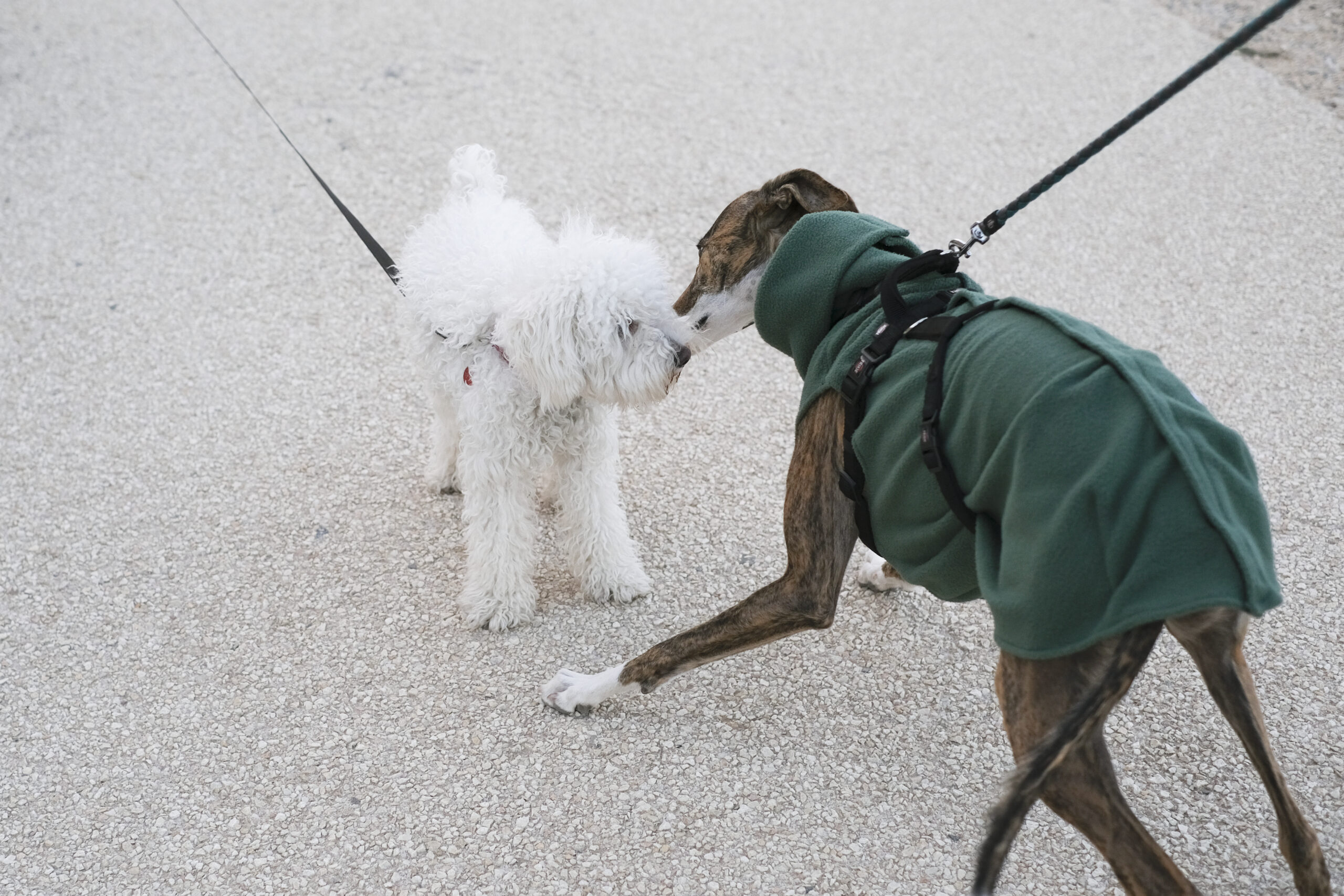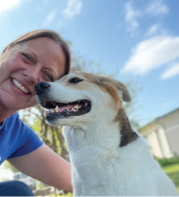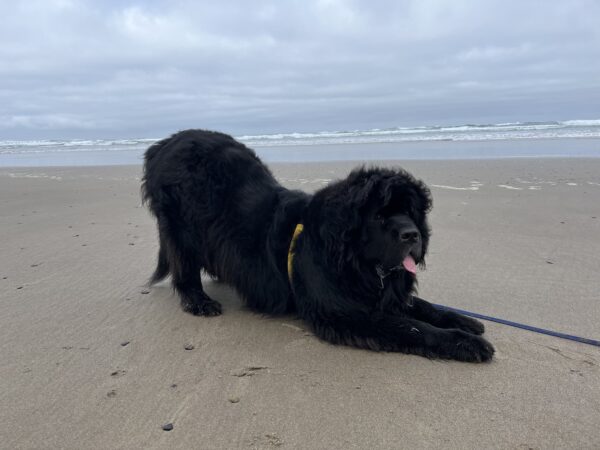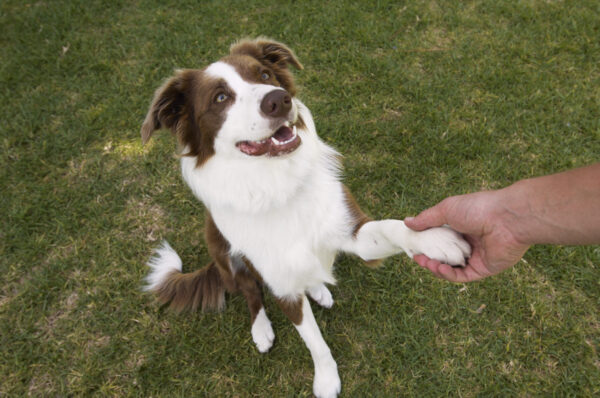Contrary to popular belief, most dogs are dog-selective or dog-tolerant and not dog-social. And that’s OK! Dogs shouldn’t be expected to like every dog they meet: Most humans don’t like every human, either. Well-planned intros keep everyone safe and happy.
Always avoid impromptu on-leash greetings, especially allowing dogs to make a beeline for each other. This can be scary for many dogs, and they can become overwhelmed quickly and become defensively aggressive, especially when unable to escape the confines of the leash
Before you introduce two dogs
If you’re dealing with an aggressive dog hold off on intros until you can get an experienced reward-based trainer on board. Also, some dogs are super excitable and jump on every dog they meet; Unfortunately, this can be troublesome, too, if the other dog is calmer or doesn’t appreciate the rudeness. Again, seek professional help for over-reactivity before attempting intros.
- Brush up on dog body language.
- Choose a neutral, safely enclosed location where dogs can interact off leash.
- Clear the area of toys or other items that may cause resource guarding issues.
- Keep treats handy but out of sight.
- Minimize/eliminate distractions.
- When intros involve puppies or senior dogs use extra caution to prevent injuries from larger or more exuberant dogs.
- No “gang greetings!” Dogs should meet each other one-on-one to prevent bullying and/or overwhelming the dogs and also to allow the handlers to pay close attention to the dogs’ body language at all times.
The 5 Steps for Introducing Dogs
- Leash both dogs at first and keep a safe distance, i.e., on opposite ends of the space. No retractable leashes. They can be dangerous in certain situations and prevent proper handling.
- Carefully gauge body language as you slowly close the gap. Only proceed if both dogs are showing they’re on board.
- Watch for stress signals and act quickly before things escalate. Use treats to divert attention and lure dogs away from one another. Try again if dogs are calm.
- If all is well, drop the leashes, but keep them on a bit in case you need to act quickly.
- End interaction immediately if necessary.
Don’t force it! If they’re not fast friends it’s OK. Maybe it’s not meant to be. Always be your dog’s advocate, and if things aren’t going well allow him the choice to opt out. First impressions go a long way, so start off on the right paw to prevent issues.






